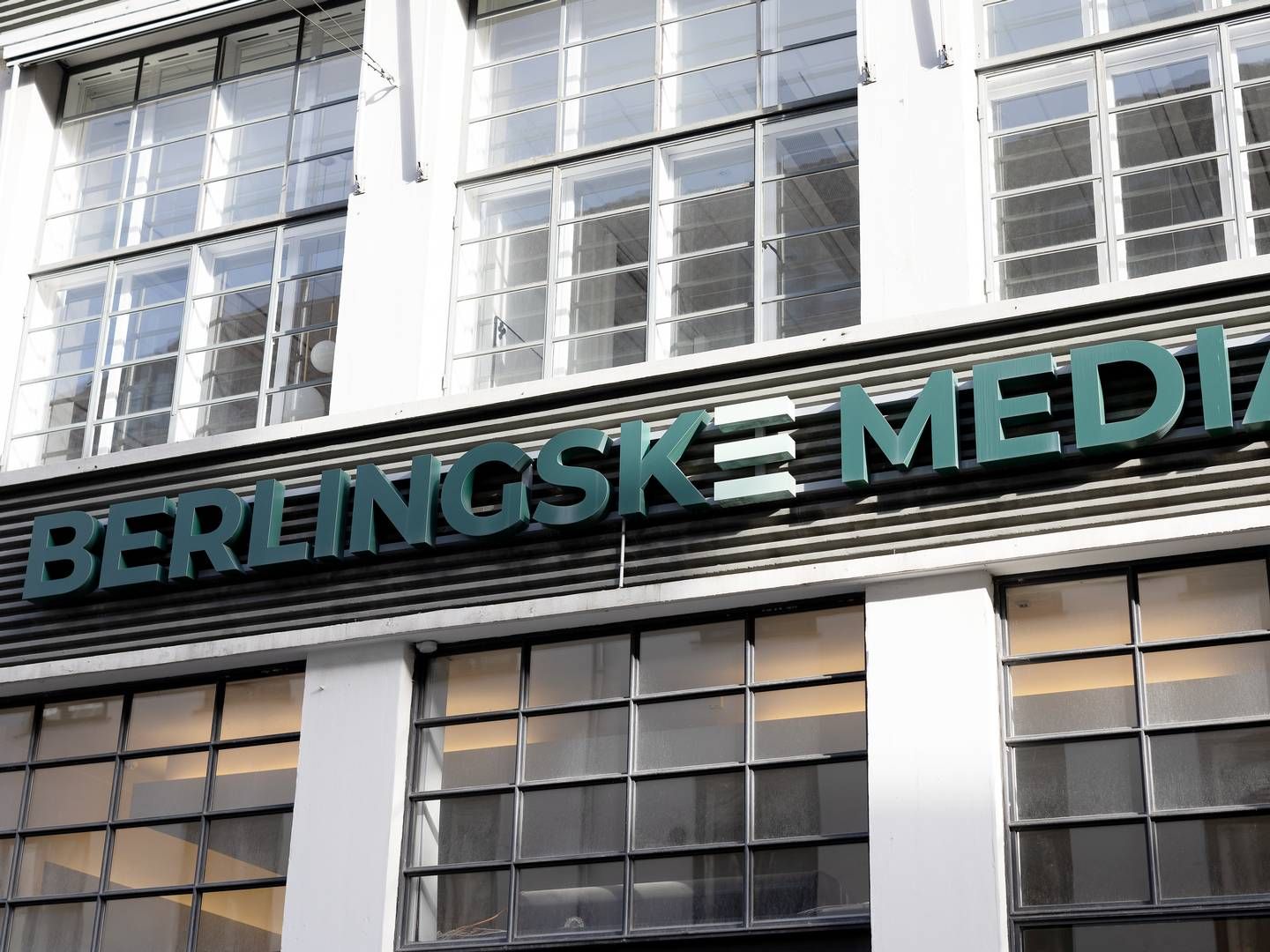Corporate branding: not JUST a company
And the company’s culture and products deliberately support that vision. Virgin music stores exude a GenX sense of excitement; its airline offers business class passengers the luxurious choice of a massage or a manicure; its mobile phone service boasts easy-to-understand calling charges and competitive prices along with an image of festivity. All this has led to the widespread perception that Virgin is a company with a distinctive personality: innovative, challenging, fun. It offers products with good value for the money but in ways that challenge the more conservative practices of its major competitors and also harbor a sense of youthful playfulness. Overall Virgin is not JUST a company – it’s an experience.
What Virgin illustrates is a company that is continually responding to and managing a set of relationships with all its stakeholders using a single symbol consisting of its distinctive name, flashy red and white colors, and a grafitti-inspired typeface that is recognizable to youth around the world. By embedding the spirit and style of virgin’s symbol in its strategic vision, organizational culture and popular image, Virgin continuously reinforces the central concept behind its brand and encourages emotional associations with it on the part of each of its stakeholders. Indeed, it is this tissue of associations that we call the corporate brand - expressing the organization behind the Virgin experience.
Companies such as Virgin, IKEA, Disney, Microsoft and LEGO, have long emphasized the role of the corporate brand. Instead of focusing all their marketing dollars on products, they promote the values, look and feel of the company that stands behind the products. As a result, their corporate brands are by far their most valuable assets, worth more than their product lines and businesses together.
What is a Corporate Brand?
Corporate branding can best be described as the process of creating, nurturing and sustaining a mutually rewarding relationship between a company and its internal and external stakeholders including managers and other employees of the company, customers, investors, suppliers, corporate partners, members of the local community, special interests like activists. There is more than one way to create and manage a corporate brand, but regardless of how it is attained, a successful corporate brand is one that generates genuine loyalty and affection because it provides a level of quality, trust, and allure to all stakeholders. A strong corporate brand grabs the attention, interest and activity of relevant stakeholders. It draws stakeholders to recognizable style, values and experiences that distinguish the organization. But corporate branding is not only about differentiation; it is also about belonging. Buried deep within any organization are the values and desires that attract the group of people involved. A strong corporate brand taps this knot of believers and offers them symbols to articulate their values and to keep them coming back for more.
Take Virgin again. This hip, anti-establishment brand uses one corporate name, logo and style in all its markets and across all its businesses by associating this symbolism with generic product labels like Virgin Megastores, Virgin Atlantic, Virgin Express, Virgin Direct, Virgin Trains and so on. Furthermore, Virgin uses Branson as highly visible component of its corporate symbol system. For instance, his attempts to fly a balloon around the world made the brand more exciting and grab the attention of the media and business press. Again and again Virgin has used its vision of challenge, value for money, quality, innovation and fun to spin off new organizational cultures in the Virgin corporate image. The same vision inspires all stakeholder groups, including managers, employees, customers, helping to unite them behind the corporate brand.
Make no mistake, corporate brands are not just giant, economy-sized product brands. Product brands are product-oriented. They focus on customers and typically lie within the responsibility of marketing departments. A corporate brand, on the other hand, is a brand whose style, look and feel is fundamentally the same across the corporation. What is more the style, look and feel are obviously linked to corporate values. For this reason, corporate brands engage the entire organization, transforming brands from a marketing issue to a strategic one and at the same time embed them as key symbols of the company in its organizational culture. Corporate brands also focus on multiple stakeholders, including employees, investors, suppliers and partners – as well as the customer. As the company’s stakeholders associate their images of the company with its key symbol, a corporate brand really takes shape.
To move from marketing to strategic thinking about branding means that you need to move from product-customer thinking to total company-stakeholder thinking. This is a much bigger picture. Total company thinking requires the integrated efforts of all organizational members regardless of their areas of responsibility. Whether assigned to marketing, human resources or finance functions, everyone in the company has an equal responsibility to the corporate brand. What is more, this means that no corporate function, or for that matter top management, can position itself as the brand owner. Strategic thinking involves all the relationships between the company and its multiple stakeholders, not just those between the company and its customers, as is the case with product brand thinking.
A Logo Is Not A Brand
Regardless of whether a company moves from product branding to corporate branding, or starts its life as a corporate brand as Amazon.com did, the most recognizable face of a corporate brand is the corporate name, logo and perhaps slogan. While corporate branding means putting the company name on all products and services, corporate branding involves much more than just brandishing the company name or redesigning its logo. A corporate brand expresses core values creatively and emotionally, for instance by inspiring a distinctive look and feel that pervades the whole company. This ambition to tap into the core values of the organization and reflect about how they are being expressed and interpreted among all stakeholders distinguishes corporate branding from corporate identity with it’s much stronger focus on logo, names and coherent design. Although people such as Wally Olins early on have pointed at the much broader implications of corporate identity, the shift to corporate branding has ultimately replaced “Logo-merchants” with “Brand Warriors” or “Guardians of the Brand” - a label used by Bang & Olufsen in their effort to make the local shop-owners take responsibility for the renewed brand. Although both corporate branding and corporate identity share a deep concern for the visual expressions, we argue that corporate branding expands our perceptions and applications of symbolism.
When the meanings stakeholders associate with the corporate brand are captured by a potent symbol, the corporate brand is expressed powerfully. This is because symbols speak to our emotions and our imagination as well as to our intellect and thus they are better at generating involvement and strong commitment. It is important to understand how symbols work. A symbol is something that stands for something else in the way a logo can stand for any and all the meanings that stakeholders give to a company., The meanings do not have to be the same among all those who share a symbol. That is the beauty of symbolism. A symbol can mean all sorts of things and since its power to unite people lies in the act of meaningfulness, the actual meanings made can be quite different. Consider the case of a national flag. Many use it, some wear it, a few burn it or paint it, which are all different ways of exposing what the flag means to each person.
Because of their ambition to be universal, corporate brands paradoxically facilitate - and even celebrate - differences of interpretation. Indeed, it’s the ability of corporate brands to be universal and particular at the same time that makes it such a potent vehicle for business. This is particularly true of corporate brands whose logos correspond to fundamental patterns of unconscious emotion that the great Swiss psychiatrist Carl Jung called archetypes. Jung argued that archetypes allow people across cultures to share symbols even when they don’t share the same meaning. A good example is MacDonald’s Golden Arches. One of the most powerful corporate brands ever created, the golden arches resonate in the hearts and minds of people all over the world – even when different cultures attach different meanings to the American culture they associate with the arches. Not only do the soaring arches have symbolic significance, but McDonald’s has brilliantly convinced the public that its yellow arches are gold. According to Jung, gold is the archetypal colour. Such is the power of corporate brands, when they are properly executed. However, the strength of the Golden Arches has also backfired on McDonalds recently as it has also become an icon of global capitalism to the emergent anti-branding movement (e.g. as described in the book No Logo by Naomi Klein).
Let’s take the Lego brand. We all recognize the logo-name with it’s rounded forms and primary colours of red, yellow and black. However, the local meanings that people attach to the Lego symbol differ between countries. For example, people in some European countries perceive Lego as a life-style and hold strong associations between Lego and family values. It has been said that Lego is “the Disney of Germany”. In contrast, marketers claim that Lego is much less of a life-style product in the US where there it is associated with the brick and it’s inherent generic learning opportunities. The same goes for some distinctively American corporate brands such as Nike and Coca-Cola. For these corporate brands, being associated with American culture is a global attraction, but at the same time there is huge variety in the particular ways these corporate symbols are interpreted around the world.
If the messages associated with the brand are too fragmented, stakeholders are likely to be confused. On the other hand, you have high coherence when shared brand values and the look and feel of the company permeate all applications of the corporate brand. In this situation, the multiple messages and the global interpretations of them add up to a rich and powerful meaningfulness. It is this meaningfulness of symbols that is shared by different people, rather than any particular meaning that gives the corporate brand its power.
Expressing Corporate Brands through Vision, Culture and Images
To grasp what corporate branding means to our perceptions of organizations you need to understand the people and the processes that underpin it. Corporate branding is built on an expansion of the traditional definition of what a company is. Traditionally a company was defined in terms of the relationships (usually hierarchical) between managers and employees. The expanded definition involves recognizing the importance of the increasingly non-hierarchical relationships between top managers, employees and other stakeholders including investors, customers, suppliers, partners, public and special interests, and the Media. In this expanded view you will find the roots of the idea of the corporate brand delivering a 360-degree message to all its stakeholders, as stated by CEO of Hewlett-Packard Company Carly Fiorina ‘Our new brand sends a 360-degree message. It starts with our employee audience and extends to everyone we work with and work for.’
Creating a corporate brand can be very challenging. A few managers have some notion of where to begin, but most have a hard time identifying the key success factors. Yet our research and consulting over the last 10 years reveals that companies that successfully practice corporate branding consistently align three interconnecting elements: strategic vision, organizational culture and corporate images. It is not the elements per se that comprise the corporate brand, it is the relationship of coherence between them, and this is what makes corporate branding so complicated.
If we group all the people involved in a company into three broad categories -- top managers, employees and other stakeholders, then it becomes easy to see the foundations of the corporate brand in the elements of the company to which these groups make significant contributions. Each broad grouping of people is roughly aligned with these elements, although this is much easier to distinguish in theory than it is in practice. Employees produce the culture that shapes the company’s behavior and gives meaning to the brand. This is what other stakeholders directly experience when they come into contact with the company. Other stakeholders such as investors, customers, suppliers, partners, public and special interests, the media produce the company’s images and reputation. Stakeholder images communicate expectations and judgments about the corporate brand, which may reflect well or poorly on the company and those affiliated with it. And finally, top managers provide vision for the future built upon a close reading of what all stakeholders are willing to support and what the company has the competence to perform. They likewise develop the company in the directions that their vision indicate so that a dynamic adaptation to shifting interests can be maintained and so that they might participate in shaping this dynamic where possible.
While the elements of strategic vision, company culture and stakeholder images are important, they cannot deliver success independently of one another. The key to managing the corporate brand is understanding how all three elements interrelate. Vision, culture and images are aspects of companies that we know lots about already. The trouble is that this knowledge is usually distributed widely throughout a company and often owned by different groups of people within it. In most companies, vision is the responsibility of top managers while development of organizational culture is often assigned to HRM. Meanwhile images are the knowledge bases marketing and communications specialists cultivate. To achieve business success these responsibilities and knowledge bases need to be integrated, and this is where corporate branding, properly understood and managed, can help companies to succeed.
If a successful corporate brand depends upon finding and maintaining the right balance between strategic vision, company culture and stakeholder images, discontinuities or gaps between these elements will create problems. Being alert to the symptoms of these problems will help organizations to locate their sources of their corporate brand. We have further developed a framework for such gap analysis in Corporate Brand Tool-kit (Harvard Business Review, February 2001).
How to Manage Corporate Brands
In order to express themselves as corporate brands organizations must have a vision – as direction for the future and as the most important source of exercising managerial influence over the corporate brand, organizations have a culture embedded in the everyday sense-making of managers and employees and images will form whenever stakeholders interact with your organization. We need to make and reiterate the point that the process of corporate branding is inevitable. Many companies engage in it with or without intending to, with or without managing it. The trick to successful corporate branding lies in how organizations first discover and then enhance the coherence between their strategic vision, organizational culture and corporate images.
Although strategic vision is one participating factor in the corporate branding process, it does not control corporate branding single handedly. Developing a corporate brand will involve knowing what the other stakeholders in the process are up to and coordinating strategic efforts of the company to influence them with their efforts to influence the company. Ideally, strategists should be key players in the corporate branding process, but should not strive to dominate it. Even though corporate strategists must be involved, they should make an effort to see themselves as partners with those employees who directly deliver to stakeholders and with those stakeholders themselves. In this sense, corporate branding defies the notion of ownership of responsibility except insofar as this ownership is and must be shared. All stakeholders are in the corporate branding process together and an attitude of collective responsibility among them must be developed. This is where strategists play their most important role – they need to lead the development, maintenance and direction of this collective responsibility and its outcomes.
This is also the reason why corporate brands can be hard to manage – particularly in large and diverse companies – where differences in turf, responsibility and professional attitude can make it very difficult to create such sense of collective responsibility for the brand. The difficulties begin at the managerial level in situations, where strong managers in each division, functional area or global territory have developed their own beliefs about who the company is and what it stands for, while interacting with their more specific stakeholders. Often, they have left the more explicit expressions of the brand to the design- and marketing departments, which rarely prevents the very same managers from twisting and bending those brand expressions according to what they find to be their own needs. For example, the coherence in brand expressions across the Atlantic is a source of conflict in many, many companies.
Shifting to a corporate branding mindset in the company directs the attention to this diversity and confronts the company with it’s degree of managerial autonomy in decision processes and how structural arrangements enforce or inhibit a corporate brand. Turning to corporate branding may also enable the company to obtain a better understanding of the (lack of) attractiveness of the company itself, as it looks into how different stakeholders construct their sense of belonging – or how they detach themselves from the company. Thus, corporate branding raises several fundamental questions, which all concern how companies balance local adaptation and diversity when engaging with multiple stakeholders across markets and businesses with the need for a distinct, coherent and recognizable corporate brand.
Although the managerial processes in creating a strong corporate brand will always reflect the unique constellation of stakeholders and their individual characteristics, we will point to a few general guidelines for managing corporate brands opposed to product brands:
Organize to serve the corporate brand: A corporate brand is created and sustained in part by the company’s people, internal processes and systems and how they are able to link internal and external stakeholders. With a strategic shift to corporate branding, companies must consider if their present organizational setup is able to support the brand. It is our experience that companies often need to undergo comprehensive reorganizations, as the overall responsibility moves from the marketing department to an overall organizational change process orchestrated by top management. For instance, LEGO has completely reorganized both its headquarters and its relationship to its markets as part of their ongoing corporate branding process. They have grouped their different communication and marketing functions, created a new global brand management unit and given them a more strategic position directly related to top management. They are seeking to create closer relations between these areas and global human resources, realizing that brand values must be guided and nurtured internally as well as externally. Last, but not least they are faced with the structural implications of shifting from a multiplicity of different product lines to a much stronger focus on brand values and a few gates into the corporate brand. These structural changes are helping LEGO to integrate cross-functionally so as to more easily balance the demands that their stakeholders are placing on the company’s vision, culture and images. .
Engage multiple stakeholders:A powerful corporate brand depends upon the actions and reactions of many stakeholders. To develop such a brand companies need to create and nurture lasting relationships with all of them. Consider LEGO, which is actively building a global community of children and their parents. The project, at development at numerous universities, has established the LEGO Learning Institute, which brings together experts and opinion leaders from around the world to discuss the latest findings about the natural creativity of children and how they can inspire future innovations in the company. Another Scandinavian company Novo Nordic has engaged employees directly in the recruitment process by having employees tell their personal career- and life-story in recruitment adds, encouraging people interested in working for the company to interact with these employees directly on their personal e-mail. Apparently, people have responded in large numbers. By the same toke the ultimate customers of the brand – people with diabetes – are drawn directly into the company interacting with it’s employees, which often have only learned about their final customers through hospitals and the medical profession. As these examples show, engaging stakeholders may emerge in everything from strategic interaction sponsored by top management to everyday relations between employees and customers.
Tell a story: Never forget the power of a good story as a way of expressing the corporate brand. Consider the tale of how Virgin was founded by the charismatic Richard Branson. It is a story about taking on the establishment and winning against all odds, such as when Virgin Atlantic triumphed in court against British Airways. The David-versus-Goliath story has the appeal of a modern fairytale, transforming Branson into something of a folk hero, particularly among the younger generation in Europe. Even though Virgin has itself now become part of the establishment, the company still repeats its us-against-the-authorities tale every time it enters a new business, and the story has yet to lose its appeal among Virgin’s growing number of fans. Other companies take a very systematic approach to how they can engage their employees in creating stories of their perceptions and use of the corporate brand values. An example is 3M, where middle-managers and engineers told one another stories about the company to help them adapt the strategic vision behind the corporate brand to their work practices. Other companies use story-telling to generate the vision behind a corporate brand. Take for example Scandinavian financial giant Nordea, which has tapped into shared stories and imagery of what it means to be Nordic in the creation and launch of their new corporate brand based on what they call “Nordic Ideas”. No matter what the preferred use of storytelling within the company, the story of the corporate brand must somehow be told and retold if it is to provide excitement to those who associate with the company.
Promise and Performance in Corporate Branding
We claim there can be multiple meanings of corporate brands across stakeholder groups, subcultures and geographic places. Managers have to listen and be aware of those local meanings and the benefits they provide and consider whether it is necessary to stretch the offerings within the brand – without destroying the coherence of the brand. Some argue that McDonalds’attempts to adjust to local tastes in food is an example that shows that global brands are not working. We disagree - this is a development within the corporate brand. Corporate branding refers to corporate symbols, attitudes, values and style - not to coherence in product and service offerings. This is an important difference and companies such as Virgin have shown us that you can include a multiplicity of products and services without jeopardizing the coherence of your corporate brand and your ability to tell your story. We believe the main challenge is to create coherence in the global culture of the company.
Many companies have given too little attention to the culture side of the corporate brand, focusing most of their effort on the image and marketing side. For these companies the main difficulty in creating strong corporate brands is to make the organizational culture support the brand -- and to make the brand energize and engage the culture. -- remember it goes both ways! Many employees today choose companies to work for on the basis of their corporate brand and their excitement about the brand. Thus, a strong corporate brand is becoming an important tool for recruiting and retaining employees. We see this in student and MBA recruiting and in the expanding number of surveys ranking the reputation of companies as most preferred work places (in Denmark most recently students of business schools, engineers and various professionals).
This implies that companies are increasingly faced with the expectation of brand delivery or promise at the company level. Corporate branding raises issues related to the promise of the company itself as a place to work, as player in society and as a source of identity to all of it’s stakeholders. As such corporate branding transform the classic promise-performance gap related to products and services into a corporate promise-performance gap, where the company’s brand expression and corporate reputation are scrutinized and hold up against actual working experiences and everyday interactions. A corporate promise-performance gap might occur when people who are attracted to companies promising an innovative and youthful culture but find something else upon starting to work at the firm. They will be deeply disappointed and disengaged if once inside the company, they don’t find the culture they expected to find.
The wide-spread of the internet makes this promise-performance gap even more transparent to stakeholders, as people will now also engage in dialogue and chat-sites, expressing their own experiences – and most often disappointments – working for specific companies. So, the internet works both ways. Stakeholders can use it to reach the company, which has increased the global transparency of organizations, as well as they can use it to engage with each other – sharing experiences at a global scale. As internet usage exploded on the corporate scene, information about the company becomes widely shared and is harder and harder to control. Here, the emergent criticism towards the strong and global brands pose a new and critical challenge to corporate brands and, in our minds, confirms the need to take a close look at the interrelations between the vision, the images and the cultures of the company…..last sentence needed.
References:
Hatch, M. J. and Schultz, M. (2001) Are the strategic stars aligned for your corporate brand, Harvard Business Review February, reprint R0102K.
Klein, N. (2000) No Logo. London: Flamingo.
Olins, W. (1989) Corporate Identity. Making business strategy visible through design. Boston: Harvard Business School Press.
Schultz, M., Hatch, M. J. and Holten Larsen, M. (2000) The Expressive Organization: Linking identity, reputation and the corporate brand. Oxford: Oxford University Press.
Published in:
Identity – trademarks, logotypes and symbols
(eds. Lena Holger & Ingelill Holmberg)
Nationalmuseum, Stockholm 2002, Raster Forlag





































